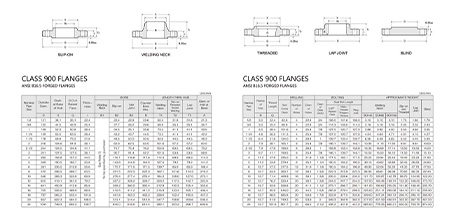-
Cangzhou Yulong Steel Co., Ltd.
-
Phone:
+86 13303177267 -
Email:
admin@ylsteelfittings.com
- English
- Arabic
- Italian
- Spanish
- Portuguese
- German
- kazakh
- Persian
- Greek
- French
- Russian
- Polish
- Thai
- Indonesian
- Vietnamese
- Zulu
- Korean
- Uzbek
- Hindi
- Serbian
- Malay
- Ukrainian
- Gujarati
- Haitian Creole
- hausa
- hawaiian
- Hebrew
- Miao
- Hungarian
- Icelandic
- igbo
- irish
- Japanese
- Javanese
- Kannada
- Khmer
- Rwandese
- Afrikaans
- Albanian
- Amharic
- Armenian
- Azerbaijani
- Basque
- Belarusian
- Bengali
- Bosnian
- Bulgarian
- Catalan
- Cebuano
- China
- China (Taiwan)
- Corsican
- Croatian
- Czech
- Danish
- Esperanto
- Estonian
- Finnish
- Frisian
- Galician
- Georgian
- Kurdish
- Kyrgyz
- Lao
- Latin
- Latvian
- Lithuanian
- Luxembourgish
- Macedonian
- Malgashi
- Malayalam
- Maltese
- Maori
- Marathi
- Mongolian
- Myanmar
- Nepali
- Norwegian
- Norwegian
- Occitan
- Pashto
- Dutch
- Punjabi
- Romanian
- Samoan
- Scottish Gaelic
- Sesotho
- Shona
- Sindhi
- Sinhala
- Slovak
- Slovenian
- Somali
- Sundanese
- Swahili
- Swedish
- Tagalog
- Tajik
- Tamil
- Tatar
- Telugu
- Turkish
- Turkmen
- Urdu
- Uighur
- Welsh
- Bantu
- Yiddish
- Yoruba

Sep . 22, 2024 20:42 Back to list
api 5l x52 psl2 specification
Understanding API 5L X52 PSL2 Specification
API 5L is a specification developed by the American Petroleum Institute (API) that defines the requirements for the manufacturing of various grades of line pipe. It is particularly critical in the transportation of oil and natural gas, making it an essential component in energy infrastructure. Among the various grades of the line pipe specified under API 5L, X52 PSL2 is one of the notable designations.
What is API 5L X52 PSL2?
The X52 refers to the minimum yield strength of the material, which is 52,000 psi. The PSL (Product Specification Level) designation indicates the quality and testing requirements assigned to the pipe. PSL2 signifies a higher standard than PSL1 in terms of additional testing and service conditions. Pipes manufactured to the X52 PSL2 grade are often utilized in pipeline applications that demand higher levels of toughness and performance, especially in environments with higher stress and tougher conditions.
Chemical Composition
The chemical composition of API 5L X52 PSL2 pipes is strictly regulated to ensure material performance and integrity. The composition typically includes elements such as carbon (C), manganese (Mn), phosphorus (P), sulfur (S), and vanadium (V). Each of these elements plays a vital role in enhancing the mechanical properties, such as tensile strength, yield strength, and overall ductility.
The typical carbon content is limited to 0.26% for X52 pipes, while manganese is often around 1.2%. These levels are crucial for ensuring the pipe’s ability to endure high pressures and potentially corrosive environments. The presence of microalloying elements, like vanadium, contributes to improved strength and ductility.
Mechanical Properties
api 5l x52 psl2 specification

Pipes classified under API 5L X52 PSL2 designation are known for their mechanical strengths. Typically, the minimum yield strength is 52,000 psi, and the minimum tensile strength is often around 66,000 psi. Furthermore, X52 PSL2 pipes must exhibit a minimum elongation of 21% for the standard sizes, reflecting good ductility, which is essential during bending or welding operations.
The toughness of the material is one of its standout features, particularly at low temperatures, which is crucial for applications in cold weather regions. This toughness is often assessed through additional testing, which may include Charpy impact tests to ensure the pipe can withstand the impact and stress during operations.
Testing and Standards
Pipes meeting the API 5L X52 PSL2 specification are subjected to rigorous testing protocols. These include hydrostatic testing, non-destructive testing (NDT), and mechanical testing. Hydrostatic testing ensures that the pipe can withstand internal pressures without leaking, while NDT techniques, such as ultrasonic or magnetic particle testing, help identify any potential defects within the material.
Additionally, API has set forth established standards that dictate the manufacturing processes, from the initial melting of the steel to the final inspection and delivery. These standards not only promote safety but also enhance the reliability and longevity of the pipelines.
Conclusion
In summary, the API 5L X52 PSL2 specification plays a pivotal role in the oil and gas industry by providing a framework that ensures the production of robust, reliable, and safe pipeline materials. Understanding the intricacies of this specification helps stakeholders make informed decisions regarding material selection, ultimately contributing to the efficiency and safety of energy transportation systems worldwide. By maintaining high standards in composition, mechanical properties, and rigorous testing, API 5L X52 PSL2 pipes are well-equipped to meet the demands of modern energy transportation challenges.
Latest news
-
ANSI 150P SS304 SO FLANGE
NewsFeb.14,2025
-
ASTM A333GR6 STEEL PIPE
NewsJan.20,2025
-
ANSI B16.5 WELDING NECK FLANGE
NewsJan.15,2026
-
ANSI B16.5 SLIP-ON FLANGE
NewsApr.19,2024
-
SABS 1123 FLANGE
NewsJan.15,2025
-
DIN86044 PLATE FLANGE
NewsApr.19,2024
-
DIN2527 BLIND FLANGE
NewsApr.12,2024
-
JIS B2311 Butt-Welding Fittings LR/SR 45°/90° /180°Seamless/Weld
NewsApr.23,2024











